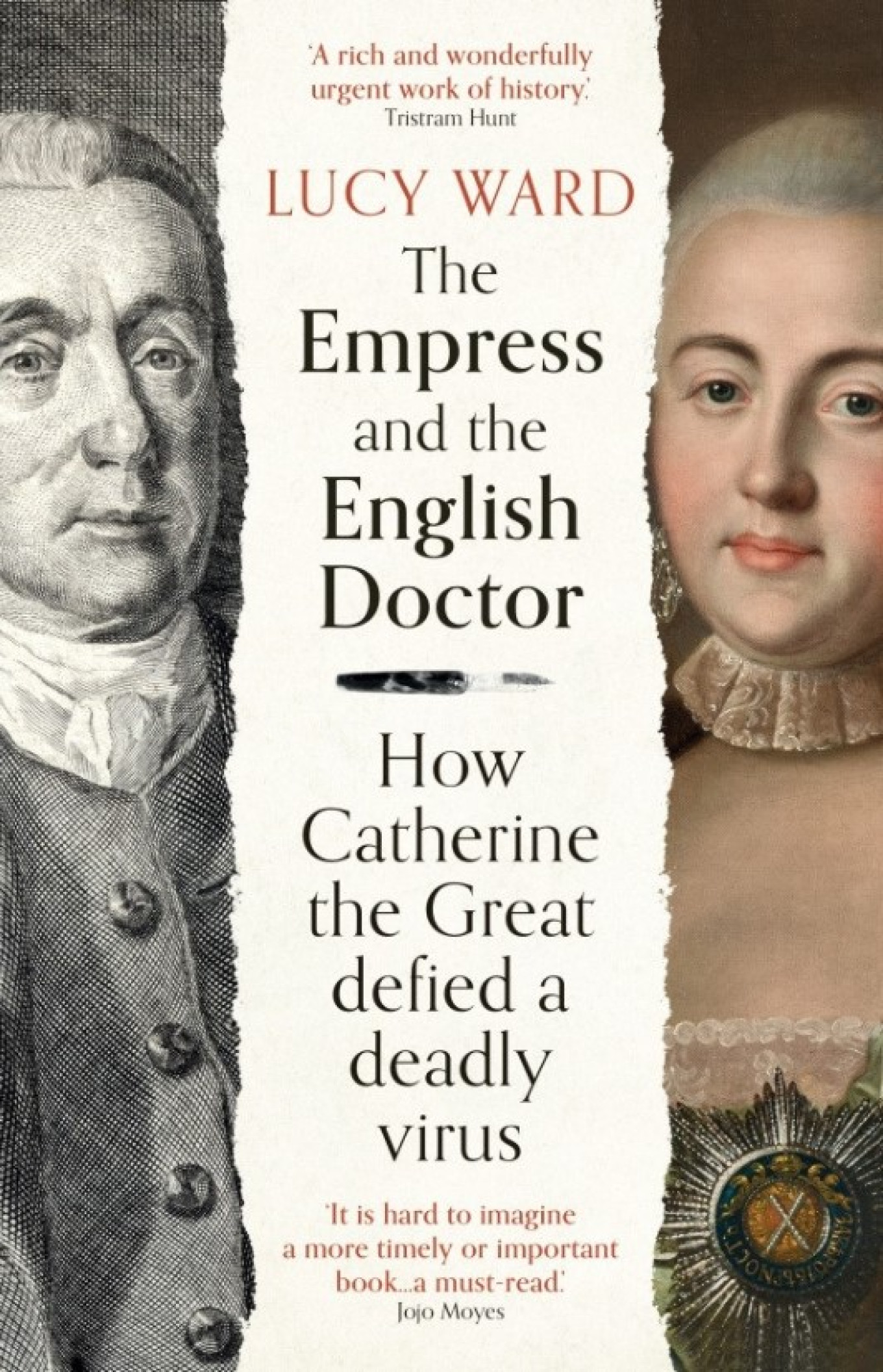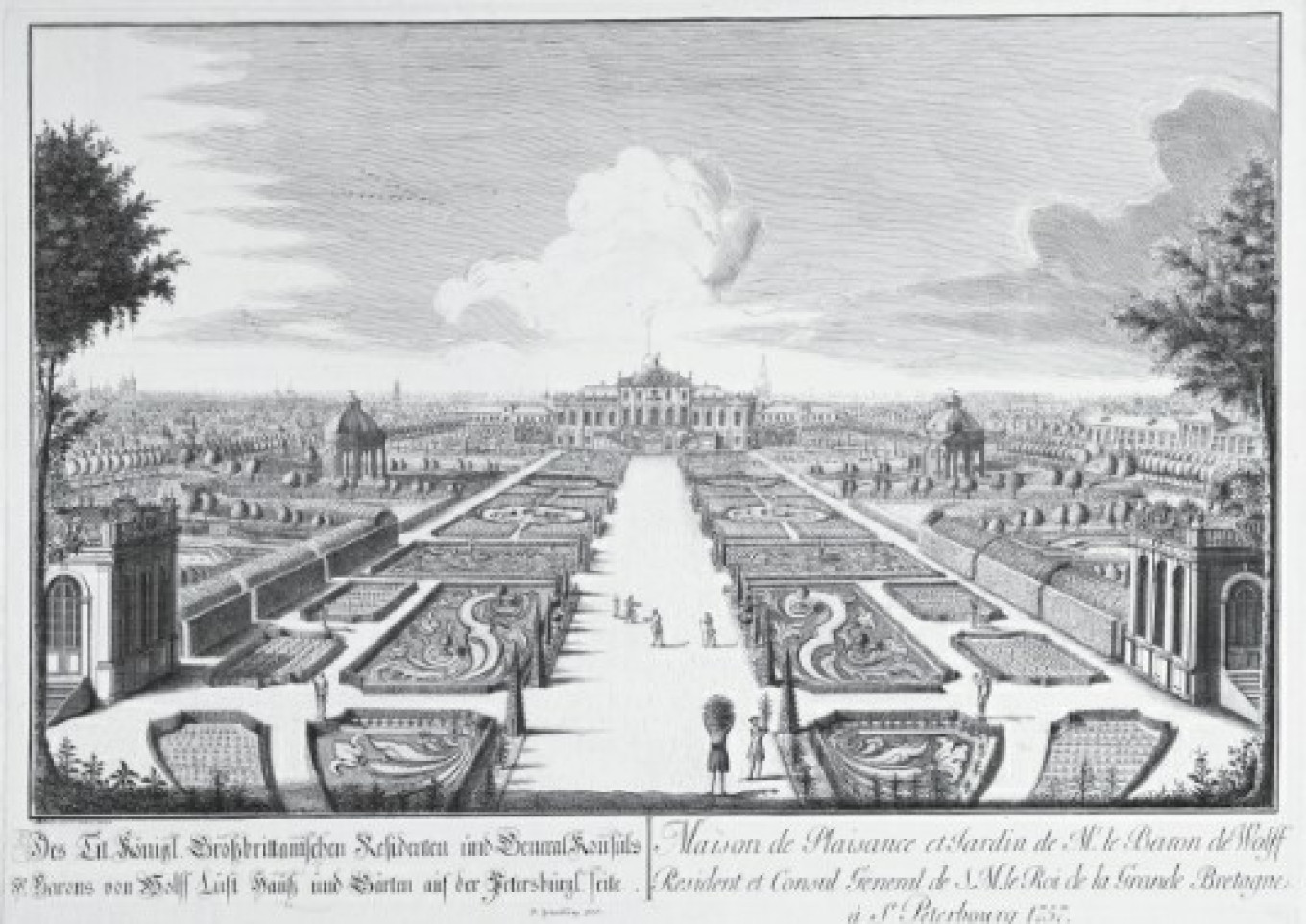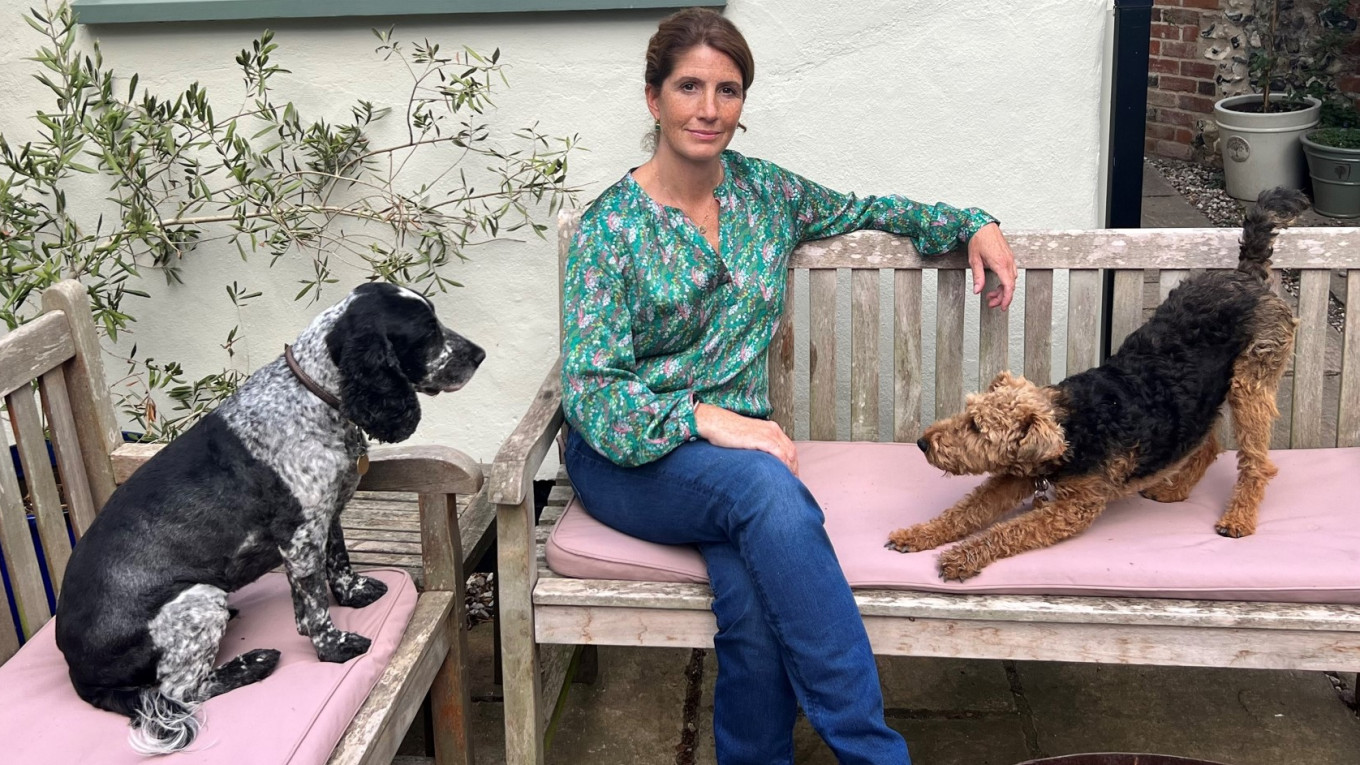“One summer’s evening early in July 1768, a horseman rode up to the gates of Port Hill House, Thomas Dimsdale’s home a few miles from Hertford. Dismounting, the visitor announced himself to the physician with a flourish: he came from the Russian embassy in London, and brought a letter from the ambassador, Count Aleksei Semyonovich Mussin-Pushkin. Breaking the seal, Thomas found an extraordinary invitation. Catherine II, Empress of Russia, had resolved to introduce the practice of inoculation across her empire, and wanted to engage a skilled physician to oversee the project. Dr Dimsdale, renowned author of The Present Method of Inoculating for the Small-Pox, was invited to meet the ambassador to discuss the plan at his earliest possible convenience.”
This extraordinary event is the beginning of the tale told by Lucy Ward in “The Empress and the English Doctor: How Catherine the Great Defied a Deadly Virus.” It is, on the one hand, the history of an epidemic, a doctor with a technique to protect patients and his two illustrious subjects. But Ward’s rich use of archival materials and her gifted storytelling turns it into a suspenseful, fascinating story — and an important part of history that has been forgotten.
Ward begins with the smallpox epidemic, from which almost half a million people died every year in Europe alone. It spread from the East through Western Europe and then on ships to the Americas, where it decimated the Aztec and Inca empires and native populations in North America. European imperial houses lost kings and heirs; in England Queen Elizabeth I barely survived.
While “modern” medicine was working with the body’s “humors” to fight the disease, folk medicine around the world had already found the cure. A British aristocrat, Mary Wortley Montagu went to Turkey in 1711 with her diplomat husband and observed September “smallpox parties” where “as many as sixteen children might be treated. Under the Turkish method…old women used a needle to deliver a drop of pus from the pustules of a smallpox patient into a child’s veins in several places, then covered the wound with pieces of walnut shell. A mild dose of the disease followed, then lifelong immunity.”
Other Western physicians confirmed that similar methods were used in China, by Circassians and Georgians in the Caucasus, in Ukraine, Kazan, Samarkand, and even Kamchatka. In each place the techniques were modified to local conditions. For example, in Kamchatka, a fishbone was used instead of a needle.
In England, Thomas Dimsdale, was working with this new technique called “inoculation.” His “Method” had elements that make modern readers cringe — before the inoculation he recommended three doses of purgative powder made of a mercury compound, powdered crabs’ claws and emetic tartar — but his inoculations were remarkably successful.
Why, then, weren’t they used throughout the world?
The problem was in part the expense — Dimsdale and other physicians required lengthy preparatory and recovery periods that were unrealistic for anyone but the very rich. The other problem was that it contradicted previous beliefs about health and disease. The 18th century had millions of its own anti-vaxers.
In this, Catherine the Great was on the side of science. She wanted to protect herself and her heir, but as importantly, she wanted to stop the smallpox deaths that decimated cities and rural areas of Russia and introduce modern techniques of medicine to the country.
At the time, Ward tells us that her act was famous around the world, “reported in newspapers in America, remarked on in London coffee houses, celebrated in French and German poetry.” She was the first monarch to undergo the procedure. Her goal, Ward writes “was to demonstrate, using her own body, the most powerful means then available to fight the greatest scourge of the eighteenth century: smallpox. Her aim was to challenge prejudice and to promote science.”
This story has a very happy ending. Both patients survived. And Catherine’s very public support of the new procedure of inoculation was one factor in the long fight against the disease. In 1980 the World Health Organization declared that smallpox had been eradicated — the only disease on earth that has been completely eliminated solely by human intervention.
"The Empress and the English Doctor: How Catherine the Great Defied a Deadly Virus"

From Chapter Five: The Preparations
The Empress’s orders were given, and the imperial machine cranked into action, beginning preparations for the introduction of inoculation across the Russian empire. As a first step, Catherine purchased a grand two-storey house, the baroque ‘dacha’ or summer residence once owned by the late Baron Jacob Wolff, to be used as an isolation hospital for inoculees. Wolff, a banker and former British consul-general renowned for his skilled oversight of the flourishing British merchant community in St Petersburg, had built up a successful business exporting Russian products including hemp, potash and rhubarb – a prized wonder drug in huge demand across eighteenth-century Europe – and importing English woollen cloth. Wolff House was situated across the Neva on the less developed Petrograd side, far from the royal palaces and surrounded by extensive gardens leading down to the Bolshaya Nevka river, making it a perfect location for infectious inoculated patients. Following an inspection visit by Thomas and Nathaniel, work got under way to equip the house as a hospital. Dr Schulenius, the physician who had introduced inoculation in the western Russian province of Livonia, was appointed as resident supervisor, assisted by Dr Strenge, a court counsellor.

While Wolff House was fitted out, Thomas followed Catherine’s instructions to take advantage of her hospitality as he prepared for the inoculations. The arrangements were reported to London by Lord Cathcart, newly installed as British ambassador. The former soldier, nicknamed Patch Cathcart after the black silk patch he wore on his right cheek to cover a bullet scar, found himself confronted just days after taking up his post with a diplomatic matter of the utmost delicacy and risk. In a despatch on 29 August to Viscount Weymouth, the British government member responsible for relations with northern European states, he sent upbeat word of the Dimsdales’ arrival. ‘The Empress will certainly be inoculated and afterwards the Grand Duke. It is a secret which everybody knows and which does not seem to occasion much speculation.’ The newly arrived diplomat’s breezy assurance was premature: delays in arranging the inoculation soon dampened any suggestion that the Empress was the intended patient. Her frequent meetings with Thomas could be passed off as discussions on Paul’s operation. The physician, still hoping to inoculate ‘forty or fifty people’ before treating Catherine, had received a warm welcome, Cathcart reported.
Things have been so managed that the Doctor is upon as free and easy a footing in the imperial palace as he could be in the house of any nobleman in England. He is a very worthy and respectable man and of great prudence; he speaks hardly any French, but understands it. The Empress, I have heard, understands a little English and will have no interpreter.
Thomas was less sanguine about his woeful language skills. He wrote to his friend Henry, an adept linguist who had lived in Budapest, heartily wishing he could have joined him in St Petersburg as an interpreter. At the invitation of the Grand Duke Paul, ‘a very handsome fine young gentleman, quick, lively and of very good parts as far as I can judge’, he and Nathaniel had joined the teenager for dinner or supper almost every day. He was flattered, but the experience was embarrassing.
"He is extremely familiar and good natured and tries me on several subjects in French but my mind has been so anxiously engaged that I have not been able to improve myself worth mentioning in the language, which is an inexpressible vexation to me as it is by no means pleasant to converse with difficulty."
Communication challenges and increasing anxiety over his mission in St Petersburg did not prevent the physician appreciating the splendour of the city and its entertainments. ‘The brilliancy of this Court and the magnificence of the palaces are amazing,’ he enthused to Henry. The Winter Palace contained its own 600-seat theatre ‘as big as Covent Garden’ hosting plays in French and Russian and concerts with 190 performers at which ‘the music is the most excellent I ever heard’. It was all paid for by the Empress, who attended each night with Paul. The autumn season would see the start of masquerades featuring ‘dancing, card-playing, wine, sweetmeats’, also at Catherine’s expense, and he had attended a magnificent ball. ‘I suppose there is not so gay [a] court in Europe.’
The simple life of his early Quaker forebears was long behind Thomas, but the high-octane revelry and indulgent diet at Court were a dramatic change from his moderate routine back in Hertford, where his only vice was a fondness for the occasional malt whisky. ‘We have lived a luxurious life by which and want of exercise I am afraid my health may suffer,’ he fretted. ‘I have not been on horseback since I left England, only twice with the Grand Duke, and then we didn’t ride fast or far.’ The doctor worried, too, about a social slip-up amid the complex protocols and hierarchies of Russian Court life. He was somewhat out of his depth, he confided to Henry. ‘I have not repented of my journey but several times have been amazed to find myself here and frequently am within an inch of committing an enormous blunder, which you will easily believe from so careless a person as you know me to be and upon a stage so entirely different from anything I have ever been accustomed to.’
Thomas need not have worried. He never detailed any actual blunders in his letters to Henry, and in any case, his intelligence and integrity were more important than any social nicety to Catherine. Her trust in her physician was so complete that she invited him away from the pressured public sphere of the court into her private apartments in the Imperial Palace. ‘He is an ingenious, plain, free man whose open manner I was sure would obtain a freedom with the great lady,’ wrote John Thomson, a Scottish merchant in St Petersburg who claimed to have witnessed the daily meetings of doctor and patient. Thomas, the Quaker-born medic used to polite home visits in rural Hertfordshire or London drawing rooms, found himself discussing the forthcoming inoculation with the Empress of Russia while sitting on her bed, sometimes with her lover beside them.
"‘[Dimsdale] had free access every morning to her bedchamber,’ Thomson recorded. They conversed for an hour or two together according to the time she could spare and he was not alter’d by sitting tête à tête on the canopy with her, nobody disturbed them [except] Count Orlov who often made a third on the canopy. She made the doctor speak to her in English what she could not comprehend in French and she comprehended it justly. She accustomed herself to treat him like an old man and an intimate friend and bid him go away when her time came to prepare to see others . . . She was charmed with the simplicity of her doctor and she determined to be inoculated."
Catherine was an expert in the power of public display but she also relished its opposite: playful familiarity. Just as she collected vast quantities of art to boost Russia’s reputation as a civilised nation, so she delighted in collecting people. Thomas, an expert in his field, direct in manner if a little clumsy, courteous but not fawning, pleased her enormously. The doctor dealt in scientific laws, rationality and the calm weighing of evidence: precisely the enlightened values she hoped to impose on a nation she felt was held back by superstition. Not only that, he came from England, a nation whose culture she admired and whose political friendship Russia enjoyed and sought to strengthen. A commercial treaty with the British, renewed just two years previously, had further boosted the flourishing trade between the two states and expanded the lively British community of merchants, diplomats, doctors, gardeners, tutors and even circus performers living and working in St Petersburg. A whole section of the Neva embankment, packed with grand merchants’ houses, was known as the English Line, and the fashionable Russian nobility flaunted their love of English products, from cloth and ceramics to carriages, hunting dogs and Burton ale. Catherine, though she never visited England, often boasted of her ‘Anglomania’, declaring that she felt ‘at home’ among English people. Ambassador Cathcart, already bewitched by the Empress just a few weeks after arriving in St Petersburg, wrote to Weymouth: ‘Russia to my predecessors, as their correspondence shows, appeared under French influence, from inclination, custom and education. Russia is now, by the Empress’s firm, determined and declared opinions, and will be more so by all her institutions, decidedly English.’
Excerpted from “The Empress and the English Doctor: How Catherine the Great Defied a Deadly Virus” by Lucy Ward, published by Oneworld Publications. Copyright © 2022 Lucy Ward. Used by permission. All rights reserved. Footnotes have been removed to ease reading. For more information about the author and this book, see the publisher’s site here or the author’s site here.
“The Empress and the English Doctor: How Catherine the Great Defied a Deadly Virus” has been shortlisted for the 2022 Pushkin House Book Prize.
A Message from The Moscow Times:
Dear readers,
We are facing unprecedented challenges. Russia's Prosecutor General's Office has designated The Moscow Times as an "undesirable" organization, criminalizing our work and putting our staff at risk of prosecution. This follows our earlier unjust labeling as a "foreign agent."
These actions are direct attempts to silence independent journalism in Russia. The authorities claim our work "discredits the decisions of the Russian leadership." We see things differently: we strive to provide accurate, unbiased reporting on Russia.
We, the journalists of The Moscow Times, refuse to be silenced. But to continue our work, we need your help.
Your support, no matter how small, makes a world of difference. If you can, please support us monthly starting from just $2. It's quick to set up, and every contribution makes a significant impact.
By supporting The Moscow Times, you're defending open, independent journalism in the face of repression. Thank you for standing with us.
Remind me later.







